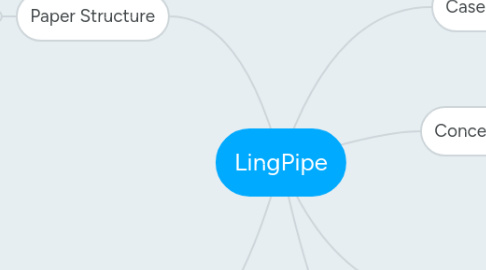
1. Related Tools
1.1. What makes LingPipe special?
2. Paper Structure
2.1. 1. Overview (2 Pages)
2.1.1. Natural Language Processing
2.1.2. Use Cases
2.1.3. LingPipe: Natural language processing toolkit
2.1.3.1. Features
2.1.3.2. Architecture
2.2. 2. Related Work (1 Page)
2.2.1. http://scholar.google.at/scholar?q=lingpipe
2.2.2. http://alias-i.com/lingpipe/web/citations.html
2.2.2.1. Carpenter, Bob. 2007. LingPipe for 99.99% Recall of Gene Mentions. Proceedings of the 2nd BioCreative workshop. Valencia, Spain
2.2.2.2. Carpenter, Bob. 2006. Character language models for Chinese word segmentation and named entity recogntion. Proceedings of the 5th ACL Chinese Special Interest Group (SIGHan). Sydney, Austrlia.
2.2.2.3. Carpenter, Bob. 2005. Scaling High-Order Character Language Models to Gigabytes. In Proceedings of the Association for Computational Linguistics Workshop on Software. Ann Arbor.
2.2.2.4. Carpenter, Bob. 2004. Phrasal Queries with LingPipe and Lucene. In Proceedings of the 13th Meeting of the Text Retrieval Conference (TREC). Gaithersburg, Maryland.
2.2.2.5. Carpenter, Bob. 2004. Orthographic variation with Lucene. In O. Gospodnetic and E. Hatcher, Lucene in Action. Manning Press.
2.3. Sample Use Case (6 Pages)
2.3.1. Problem Statement
2.3.2. e.g. Sentiment Analysis
2.3.3. Approach
2.3.4. Evaluation
2.4. Conclusion (1 Page)
2.4.1. Lessions learned
2.4.2. Summary

